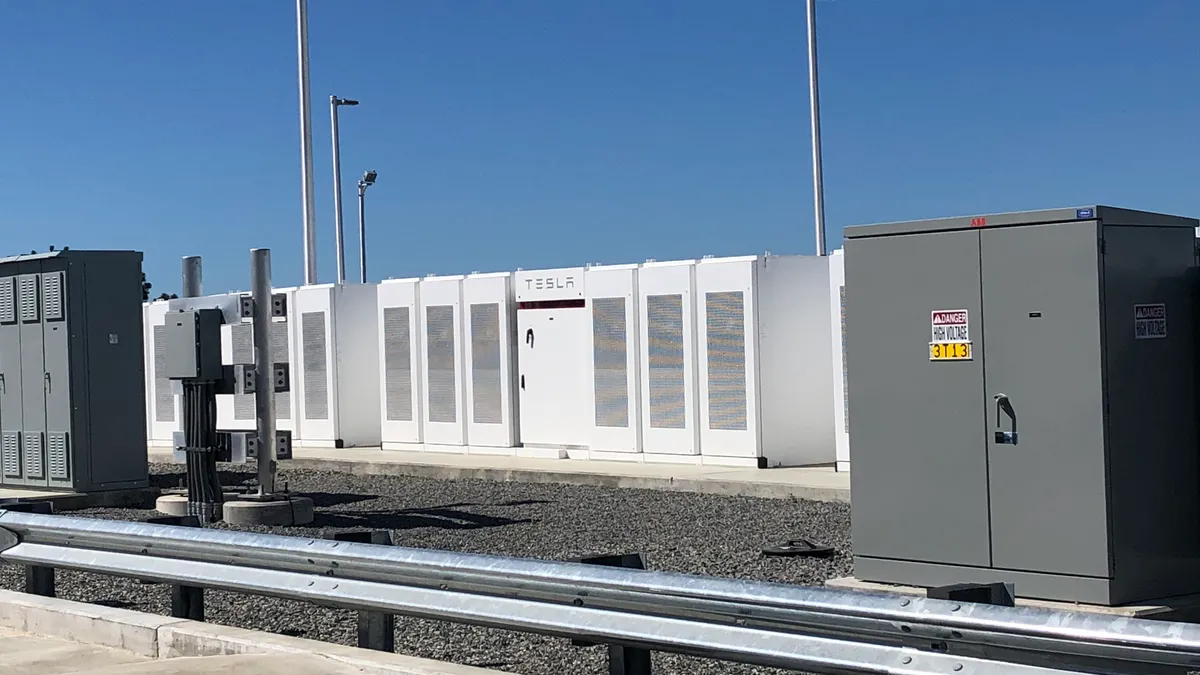Dive Brief:
- National Grid installed a 6 MW, 48 MWh battery storage facility it will be using to supply power to Nantucket Island, in Massachusetts.
- The battery is the largest of its kind in New England, according to the utility, and will help meet energy storage goals in the state. Together with the 15 MW diesel generator and a power control house, the project cost $81 million. National Grid announced the partnership with Tesla last year, but held a ribbon-cutting event for the battery system on Tuesday.
Dive Insight:
While the utility has more in store to upgrade the island's electrical infrastructure, National Grid has started exploring the possibility of using "that battery for something else during the times it's not used for contingency," Wynter told Utility Dive.
The utility partnered with the Department of Energy's Pacific Northwest National Laboratory to model and think through other applications for the storage, such as potentially bidding it into the ISO-New England markets. The lab is doing an "extensive amount of research on large scale transmission and battery networks," Wynter said.
"They model things for us like the battery's performance on the island ... and how well we think we're going to improve customer uptime because of this battery in place ... and how can we model the use of this battery in providing frequency response and other services."
Tesla declined a request for comment about the long-lasting battery's applications.
There are two subsea cables bringing power from the mainland to Nantucket. A third cable would have meant close to a $200 million investment, Wynter said, compared to the $81 million hybrid solution.
"It's not a long run [from mainland Massachusetts to Nantucket] but it is complex doing subsea cable," Wynter said. "There's substantial savings for customers."
National Grid also replaced an older diesel generator on Nantucket with a 15 MW unit for a hybrid resilience solution.
"The whole system can operate almost in tandem," to extend the eight-hour duration in case of subsea cable failures, Wynter said.
The battery and back-up generation are "vital components" to the island's resilience during summer months, but subsea cables could experience an outage any time of the year, Wynter said, so the project will increase resilience and reliability year-round.
During peak summer months, the battery will be charged during the night and dispatched during the day.
"What's important is increased deployment of batteries are going to help drive the prices down [during peak times]," Wynter said. "We're gonna need them as we have more and more intermittent energy services."














